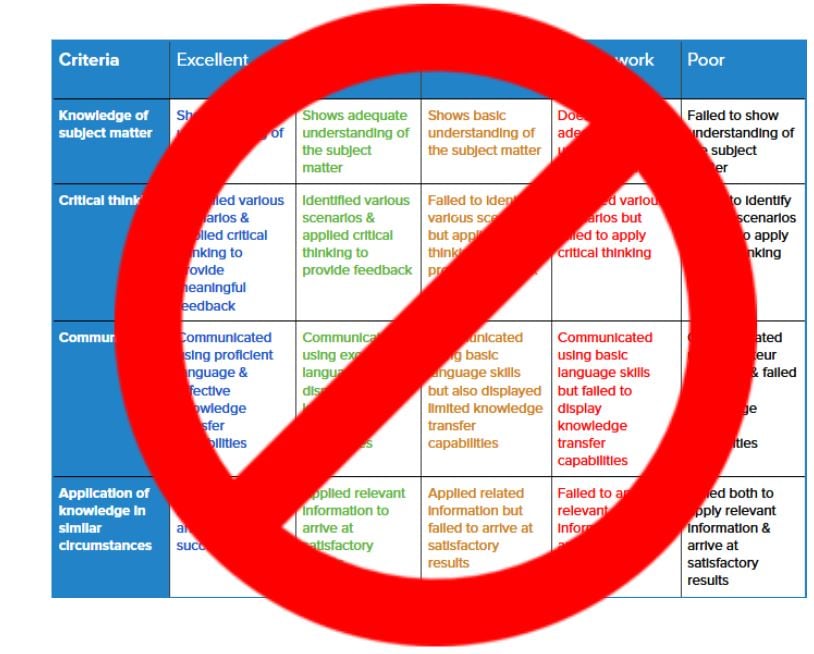Reinventing Rubrics
 People that know me, know that I have a tendency to rant. There are various topics, that when mentioned, send me down the path of a rant of no return. The subject of rubrics is one of those topics. According to the Glossary of Education Reform, “Rubrics are generally designed to be simple, explicit, and easily understood.”
People that know me, know that I have a tendency to rant. There are various topics, that when mentioned, send me down the path of a rant of no return. The subject of rubrics is one of those topics. According to the Glossary of Education Reform, “Rubrics are generally designed to be simple, explicit, and easily understood.”
So what do I have against rubrics? Nothing, if they match that definition. The problem is, they rarely do.
Many rubrics are a chaotic cacophony of 6 rowed, 5 columned technical-jargon monsters prepared by teachers to impress their administration. They are masterful in specificity and written on a master’s reading level. Very often, rubrics are designed as formal assessment tools by teachers, for teachers. But what if the goal instead was to create a simple guide for students to know what to focus on to prepare an excellent product and achieve mastery? If that were truly the goal - to create something simple, for students to follow, to help them create high-quality work, then I imagine rubrics would be prepared and delivered much differently than they are in many classrooms.
To achieve student-centered rubrics, they would not be pre-created by the teacher, but co-designed with students. It is similar to the idea of co-creating classroom rules with your students. Of course, there are some non-negotiables, and the savviest of teachers know how to sneak in the most critical elements as part of the collaborative conversation and seek agreement from the class. If a teacher has multiple classes but the same assignment, the great thing is that the students get to jump in on different parts of the design process. Let’s take a 6th-grade literature class that creates a rubric for a writing assignment. A collaborative creation process could proceed as follows:
- 1st group identifies and empathizes with the problem- we need a guide for our writing assignment. This group brainstorms potential elements that should be evaluated.
- 2nd group sees the progress made by the previous class and refines the elements and begins developing the details of those elements.
- 3rd group continues where the previous group left off, simplifies terminology, and agrees that the rubric is simple, clear, and detailed enough to follow as a guide.
The teacher is present while the rubric is developed, asking the right questions, and ensuring certain elements are not neglected. The teacher is a co-designer and co-signer of what the students create. All other classes are introduced to this rubric as a peer-created guide. If modifications are necessary, they agree on them and make the necessary changes. Students are happy and understand expectations, the teacher is happy, and administrators and parents are happy.
Watch the video at the right to see how to create your own single-point rubric!
Here’s a final suggestion: instead of grading all of your assignments in one fell-swoop, split your class into small teams and have peers provide feedback on first drafts, give time for additional corrections, then collect student work to evaluate. If you are able to be generous with your time, I would also suggest allowing the students one final round of revisions before grading. In other words, treat their assignments similar to how their work will be more likely designed, constructed, revised, and improved in the professional setting.